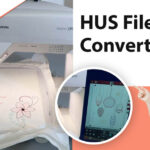Embroidery has always been a timeless art form, but with today’s technology, it has evolved into something faster, more precise, and versatile. The secret lies in Digitized Embroidery Designs, which transform simple artwork into stitch-ready files that embroidery machines can read. Whether you’re creating custom apparel, promotional products, or personalized gifts, digitized designs make the process smooth and the results professional. In this article, we’ll explore what digitized embroidery is, why it’s essential for modern embroidery projects, and how it ensures flawless outcomes every time.
What Are Digitized Embroidery Designs?
At its core, digitizing is the process of converting an image—such as a logo, artwork, or sketch—into a digital embroidery file. Unlike standard images (like JPG or PNG), embroidery machines require files with stitch data. This data tells the machine how to stitch: where to start, stop, change colors, and adjust stitch density.
A digitized embroidery design is essentially the blueprint that guides your machine to recreate the artwork on fabric with precision. Without it, even the most beautiful design can’t be stitched correctly.
Why Digitized Designs Are Essential
1. Precision and Accuracy
Digitizing eliminates guesswork by creating exact stitch paths. This ensures your design comes out neat, symmetrical, and free from distortions.
2. Machine Compatibility
Every embroidery machine uses a specific file format (like DST, PES, JEF, EXP). Digitized designs are tailored to these formats, ensuring your machine runs without hiccups.
3. Time Savings
Instead of manually adjusting designs during embroidery, digitized files let your machine handle the work seamlessly. This means faster production and fewer wasted materials.
4. Scalability
Digitized embroidery files can be resized while maintaining stitch quality, making them perfect for everything from small patches to large back designs.
Popular Uses for Digitized Embroidery Designs
Digitized embroidery isn’t limited to one type of project. Here are some of the most popular applications:
- Corporate Logos – Companies use digitized logos on uniforms, hats, and promotional items.
- Custom Apparel – From t-shirts to jackets, digitized designs make personalization easy.
- Sportswear and Team Gear – Perfect for stitching team logos, mascots, and player names.
- Personalized Gifts – Monograms, initials, and unique patterns add a special touch to gifts.
- Home Décor – Embroidered pillows, tablecloths, and wall hangings use digitized files for crisp detailing.
The Process of Creating Digitized Embroidery Designs
Step 1: Artwork Preparation
A clean, high-quality image is uploaded. The clearer the source artwork, the better the final stitch quality.
Step 2: Digitizing with Software
Specialized software converts the design into stitches. The digitizer sets stitch types (satin, fill, running stitches), directions, and densities.
Step 3: Format Conversion
The file is exported into the format required by your embroidery machine.
Step 4: Testing and Adjustments
A test stitch-out is done to check accuracy. Adjustments may be made to avoid thread breaks, puckering, or gaps.
Qualities of a High-Quality Digitized Design
Not all digitized embroidery is created equal. Here’s what separates high-quality work from the rest:
- Smooth Stitch Flow – No unnecessary jumps or trims.
- Balanced Density – Prevents fabric puckering or thread breaks.
- Clean Color Transitions – Colors change logically without overlapping issues.
- Proper Underlay – Supports top stitches for durability and clarity.
- Optimized for Fabric Type – A design digitized for denim won’t perform the same on silk without adjustments.
Common Embroidery File Formats
Different embroidery machines require different file types. Some of the most common include:
- DST – Standard for Tajima machines.
- PES – Compatible with Brother and Baby Lock machines.
- JEF – Used by Janome embroidery machines.
- EXP – Often for Melco and Bernina machines.
- VP3 – Common with Husqvarna and Pfaff machines.
Having your design in the right format is essential for smooth embroidery runs.
Benefits of Using Professional Digitized Embroidery Designs
While there are auto-digitizing tools available, professional digitizing offers unmatched results:
- Crisp Detailing – Even tiny text and complex logos look sharp.
- Fabric-Specific Adjustments – Stitch settings are optimized for the material you’re working on.
- Fewer Errors – Reduces downtime caused by thread breaks or poor stitching.
- Better Overall Look – Designs appear polished and professional, boosting the value of your final product.
DIY vs. Professional Digitizing
You may wonder whether to digitize your own designs or hire a professional. While software exists for DIY digitizing, it has a steep learning curve and requires lots of trial and error. Professional digitizers, on the other hand, bring experience, skill, and efficiency—ensuring your designs stitch perfectly on the first try.
If your project involves simple shapes and personal use, DIY may suffice. But for logos, business branding, or detailed artwork, professional digitizing is the smarter choice.
Tips for Getting the Best Results
- Always start with high-resolution artwork.
- Choose a digitizer experienced with your specific fabric and machine type.
- Don’t skimp on test stitch-outs before bulk production.
- Provide clear instructions if you need specific sizes, colors, or placements.
Wrapping Up
Digitized Embroidery Designs are the foundation of modern embroidery. They make it possible to bring complex artwork, logos, and personal touches to life on fabric with accuracy and style. Whether you’re a business owner, a crafter, or someone creating gifts, having reliable digitized files ensures your projects look professional and stand the test of time.
For flawless results and expert support, many turn to Digitizing Buddy, a trusted name in the industry that delivers high-quality embroidery digitizing services with precision and care.

